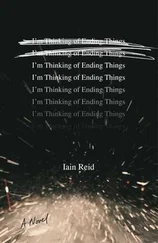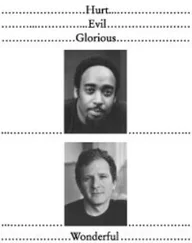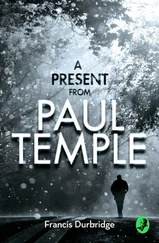Before the vat was built, I tested the entrance design many times in my imagination. Many of the cowboys at the feedlot were skeptical and did not believe my design would work. After it was constructed, they modified it behind my back, because they were sure it was wrong. A metal sheet was installed over the non-slip ramp, converting it back to an old-fashioned slide entrance. The first day they used it, two cattle drowned because they panicked and flipped over backward.
When I saw the metal sheet, I made the cowboys take it out. They were flabbergasted when they saw that the ramp now worked perfectly. Each calf stepped out over the steep drop-off and quietly plopped into the water. I fondly refer to this design as «cattle walking on water.»
Over the years, I have observed that many ranchers and cattle feeders think that the only way to induce animals to enter handling facilities is to force them in. The owners and managers of feedlots sometimes have a hard time comprehending that if devices such as dip vats and restraint chutes are properly designed, cattle will voluntarily enter them. I can imagine the sensations the animals would feel. If I had a calf's body and hooves, I would be very scared to step on a slippery metal ramp.
There were still problems I had to resolve after the animals left the dip vat. The platform where they exit is usually divided into two pens so that cattle can dry on one side while the other side is being filled. No one understood why the animals coming out of the dip vat would sometimes become excited, but I figured it was because they wanted to follow their drier buddies, not unlike children divided from their classmates on a playground. I installed a solid fence between the two pens to prevent the animals on one side from seeing the animals on the other side. It was a very simple solution, and it amazed me that nobody had ever thought of it before.
The system I designed for filtering and cleaning the cattle hair and other gook out of the dip vat was based on a swimming pool filtration system. My imagination scanned two specific swimming pool filters that I had operated, one on my Aunt Brecheen's ranch in Arizona and one at our home. To prevent water from splashing out of the dip vat, I copied the concrete coping overhang used on swimming pools. That idea, like many of my best designs, came to me very clearly just before I drifted off to sleep at night.
Being autistic, I don't naturally assimilate information that most people take for granted. Instead, I store information in my head as if it were on a CD-ROM disc. When I recall something I have learned, I replay the video in my imagination. The videos in my memory are always specific; for example, I remember handling cattle at the veterinary chute at Producer's Feedlot or McElhaney Cattle Company. I remember exactly how the animals behaved in that specific situation and how the chutes and other equipment were built. The exact construction of steel fenceposts and pipe rails in each case is also part of my visual memory. I can run these images over and over and study them to solve design problems.
If I let my mind wander, the video jumps in a kind of free association from fence construction to a particular welding shop where I've seen posts being cut and Old John, the welder, making gates. If I continue thinking about Old John welding a gate, the video image changes to a series of short scenes of building gates on several projects I've worked on. Each video memory triggers another in this associative fashion, and my daydreams may wander far from the design problem. The next image may be of having a good time listening to John and the construction crew tell war stories, such as the time the backhoe dug into a nest of rattlesnakes and the machine was abandoned for two weeks because everybody was afraid to go near it.
This process of association is a good example of how my mind can wander off the subject. People with more severe autism have difficulty stopping endless associations. I am able to stop them and get my mind back on track. When I find my mind wandering too far away from a design problem I am trying to solve, I just tell myself to get back to the problem.
Interviews with autistic adults who have good speech and are able to articulate their thought processes indicate that most of them also think in visual images. More severely impaired people, who can speak but are unable to explain how they think, have highly associational thought patterns. Charles Hart, the author of Without Reason, a book about his autistic son and brother, sums up his son's thinking in one sentence: «Ted's thought processes aren't logical, they're associational.» This explains Ted's statement «I'm not afraid of planes. That's why they fly so high.» In his mind, planes fly high because he is not afraid of them; he combines two pieces of information, that planes fly high and that he is not afraid of heights.
Another indicator of visual thinking as the primary method of processing information is the remarkable ability many autistic people exhibit in solving jigsaw puzzles, finding their way around a city, or memorizing enormous amounts of information at a glance. My own thought patterns are similar to those described by A. R. Luria in The Mind of a Mnemonist. This book describes a man who worked as a newspaper reporter and could perform amazing feats of memory. Like me, the mnemonist had a visual image for everything he had heard or read. Luria writes, «For when he heard or read a word, it was at once converted into a visual image corresponding with the object the word signified for him.» The great inventor Nikola Tesla was also a visual thinker. When he designed electric turbines for power generation, he built each turbine in his head. He operated it in his imagination and corrected faults. He said it did not matter whether the turbine was tested in his thoughts or in his shop; the results would be the same.
Early in my career I got into fights with other engineers at meat-packing plants. I couldn't imagine that they could be so stupid as not to see the mistakes on the drawing before the equipment was installed. Now I realize it was not stupidity but a lack of visualization skills. They literally could not see. I was fired from one company that manufactured meat-packing plant equipment because I fought with the engineers over a design which eventually caused the collapse of an overhead track that moved 1,200-pound beef carcasses from the end of a conveyor. As each carcass came off the conveyor, it dropped about three feet before it was abruptly halted by a chain attached to a trolley on the overhead track. The first time the machine was run, the track was pulled out of the ceiling. The employees fixed it by bolting it more securely and installing additional brackets. This only solved the problem temporarily, because the force of the carcasses jerking the chains was so great. Strengthening the overhead track was treating a symptom of the problem rather than its cause. I tried to warn them. It was like bending a paper clip back and forth too many times. After a while it breaks.
Different Ways of Thinking
The idea that people have different thinking patterns is not new. Francis Galton, in Inquiries into Human Faculty and Development, wrote that while some people see vivid mental pictures, for others «the idea is not felt to be mental pictures, but rather symbols of facts. In people with low pictorial imagery, they would remember their breakfast table but they could not see it.»
It wasn't until I went to college that I realized some people are completely verbal and think only in words. I first suspected this when I read an article in a science magazine about the development of tool use in prehistoric humans. Some renowned scientist speculated that humans had to develop language before they could develop tools. I thought this was ridiculous, and this article gave me the first inkling that my thought processes were truly different from those of many other people. When I invent things, I do not use language. Some other people think in vividly detailed pictures, but most think in a combination of words and vague, generalized pictures.
Читать дальше











